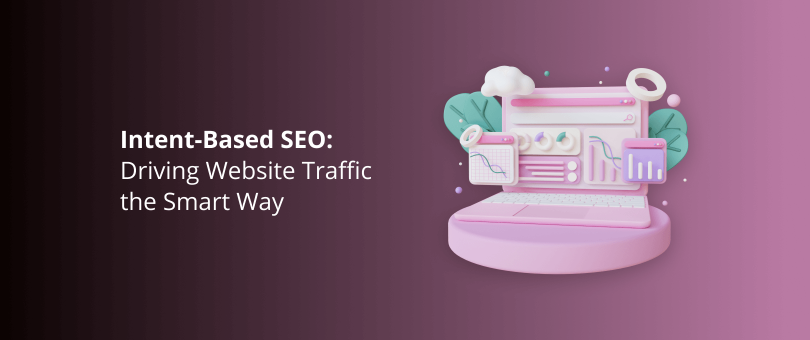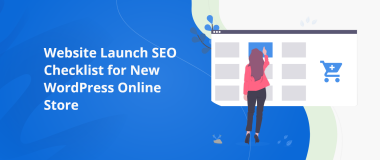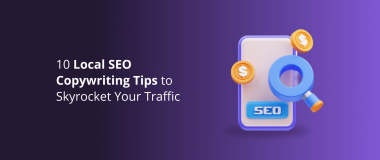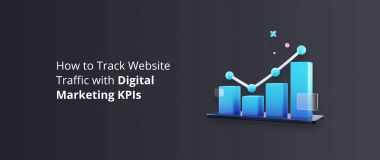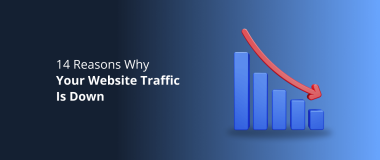Google and other search engines now use technical parameters (bounce rate, loading speed, number of monthly visitors) to obtain a higher ranking in SERPs (Search Engine Result Pages). Such platforms tend to focus their efforts on providing consumers with results that answer their needs immediately.
For example, if people are searching for the name of a particular retail chain in Google, the top results show the nearest store location and the company’s website, rather than the contacts of their central office.
Furthermore, a search has become way more elaborate. Users search for long-tail keywords, filled with additional context. With the rise of voice search, this trend is continually growing.
Search engines have acknowledged this market change and now rank authoritative, quality content higher, by interpreting the context of your page and fitting it to more precise searches.
This practically means that the old practice of keyword stuffing that some brands are using is no longer effective, even more – it’ll negatively affect your ranking.
Instead of basing your SEO efforts on pure technical parameters, taking the intent of the user search and basing your search engine optimization on this helps you reach your ideal audience.
Understanding User Intent in Searches
In a nutshell, search intent is the reason someone conducts a specific online search, and can be categorized into three different stages:
- looking for something to answer a question (informational)
- visiting a website (navigational)
- looking to buy something (transactional)
Google has improved its algorithm to better match what people are looking for. You need to make sure that your post or page fits the search intent of your audience.

Based on the needs and goals of consumers, the searches could be divided into 3 main types:
- Informational. The user intends to answer a question or learn something, in general – to receive detailed information on a particular topic. The informational search is similar to the “awareness stage” of the buying cycle. Consumers are most probably unaware of your brand, that’s their first point of contact with it and have to see both real values in your content and professionalism they can trust to become leads. Most importantly, such queries are time-specific, they need to be answered promptly and are usually connected to searches like “Barcelona flights”, “smartphone reviews”, “stock prices”, and “local weather”.
- Navigational. Also known as “Go queries”, these searches aim to lead the user to a specific website, page, or a location. They’re performed by consumers who already know your brand (and are possible leads). For such queries, it’s important to have good technical SEO to provide easy access for users. Examples of such searches are “Contact Devrix”, “Blizzard Log-in”, “Hubspot Blog”.
- Transactional. Searches performed with the intent to buy a product or purchase a service. These searches are the most competitive ones as they’re targeting consumers at the consideration stage. Keywords usually include phrasing like “Discount”, “Promotion”, “Top [product]”, “[product] vs [product]”, “buy [product] online”, “best [product] for [specific target group]”.
To align your marketing efforts with the needs and perceptions of users and drive up real results through intent-based SEO, you have to consider the reason your buyer personas are searching for something, understand their behavior and have a ready-to-go plan to convert them to leads.
Choosing Keywords
SEO keywords are phrases that make your website work for web searches. Keyword research is an integral part of SEO, but it’s not always as simple or straightforward to do well.
There are tons of great tools and processes out there that can help you with your search engine optimization efforts. However, your process needs to be focused on delivering results for your business in terms of traffic and revenue growth.

As you most probably know, it’s not important to just select the focus keyword of every page based on search volume, but also on difficulty. There are many tools to help you such as Google Keyword Planner, WordStream’s Keyword Tool, Semrush, Ahrefs, and Soovle. However, keyword tools usually do not take into account the intent of the user.
For example, let’s say you’re a freelance editor, working with IT brands. The keyword “editor” has high search volume and high difficulty, but you’ve estimated you could rank among the top 3 results.
Let’s say you’ve outdone yourself and managed to rank number one through link building. Great news, theoretically you’ll reach a substantial amount of people interested in your services.
However, most people searching for “editor” are trying to find automatic software or a photo editing one. So, what you would’ve actually done in the given case is attracting a vast amount of people who are not interested in your services, resulting in catastrophic bounce rates, and a significant loss to your link-building investment.
This is why performing a simple Google search with the keywords you’ve chosen could be crucial for your campaign’s success.
Latent Semantic Indexing (LSI)
Latent semantic indexing is a mathematical practice that helps search engines better understand how unstructured data relates to each other.
LSI keywords are a great way to strengthen your topic or theme by using similar keywords throughout your content. If you end up ranking in Google’s search engine results pages (SERPs), then it is possible that other related terms will also show up at the top of their listings!
An essential part of a proper intent based SEO is to understand how search engines work and how users behave on such platforms. Words in every text are semantically connected to form the meaning of your content. Google and other search engines now understand and use this fact to provide more adequate search results.
Taking this into account, your focus keyword is just a part of the whole picture. Search engines are now able to link other words in your content to the main topic to determine the exact context of your page and display it in the proper searches.
This is why it’s essential to focus on a specific subset of keywords, rather than a single phrase. Otherwise, you’re limiting your target to people searching for a single query.
Choosing a small but very industry-specific set of keywords, targeting your audience and their interests, will help you reach more people interested in your brand.

For example, “BU” could mean both Boston University, a brand for cosmetics, and Bulgaria’s country code. Words like “application process”, “university”, and “faculty-staff” are not only possible search queries but also phrases that give additional meaning to your text and help search engines understand what it is about to rank you for the searches related to Boston University.
Related: Get Discovered with Search: Keyword Density Vs. LSI in SEO
Mobile Search
Dd you know that 48% of buyers use smartphones to start searching? This trend profoundly affects intent based SEO as with the rise of voice search, such queries are usually lengthier and use a more colloquial phrasing.
The statistics point to the fact that for the future, the length of our titles should only continue to rise. Furthermore, we’ll have to rely much more on already established phrasings that consumers are used to searching for such as “How to…”, “Why…”, “Top X …”, “Helpful Tips”, “Best Practices”, etc.
If you want to reach your buyer personas, you have to make your content as easy to find as possible. Intent-based SEO, requires you to always keep in mind the user journey and use the words that your potential consumers are searching for to make your pages rank higher.
Aligning Content With Search Intent
Inbound marketing is about delivering consumers what they need when they need it. This is why the most important factor to consider is that content relevance to the search query as a result of which it is displayed.

For example, let’s say you’re trying to rank a decision-making landing page for the keyword “small business marketing”, hoping to reach small businesses interested in your services. If you Google the keywords, you’ll see that all the results are for an informative search “how to”, “top X tips”, etc.
This means that most people searching for “small businesses marketing” are not ready to buy, they’re just searching for information on certain questions.
Your articles would be far better accepted and “easier to find” for the users than your website. The investment in making your website rank high on SERPs will be very costly, and you’ll reach prospects who’ve not decided to purchase from you yet (there’s no intent).
Moving Prospects Down the Funnel
Our primary goals as marketers are to turn:
- Viewers into Leads (Informational Searches)
- Leads into Clients (Transactional Searches)
- Clients into Ambassadors (Navigational Searches)
As we’ve discussed before, the only specification of the navigational search is that it must be perfectly optimized taking into consideration the technical parameters of search engines (authority, bounce-rate, number of visitors).
Information searches, on the other hand, are mostly performed by prospects who are either unaware of your brand or are at an awareness stage because they’ve been searching for an answer or a solution to their query.
To turn them into leads, you have to focus on adding the right type of content that moves viewers down the funnel once they have their questions answered and view you as a viable source of information.
This is the beginning of their user journey. Lead Generation CTAs, Newsletter Signups, Whitepapers, Push Notifications Opt-ins, and similar content that leverages the intent of the user and turns it into a “demand” is a must-have on such pages.
On the other hand, a transactional search is usually just a single query, out of a whole series of similar ones, from people who are at the consideration stage and deciding whom to purchase from.
So, the best possible thing they can find is a landing page, explaining the topic thoroughly, presenting statistical information and facts, key differentiators that make your brand unique, your expertise, and brand messages.
Link-Building
Link building is an essential part of search engine optimization (SEO). Search engines crawl the web, looking for hyperlinks from one page to another and entire websites in order rank sites higher. A link from a high-authority website will help Google believe you’re a trustworthy resource on this subject.

As you probably know, links leading to your website increase its authority. Furthermore, you’ll rank higher in search engines for queries using the keywords used to link to your page.
This is why internal linking is an essential intent-based SEO approach to move customers down the funnel, continue the user journey, and provide further information on a topic the viewer might want to know more about.
However, internal link-building should feel organic to your site and be used only in cases when the user needs to gain further information or navigate to another page. The two most effective places where you could use such links are the footer of your website and in your blog.
Craft Topic Clusters
Topic clusters are pillar pages built around a broader topic (e.g., “Recruitment”), including various more precise topics (clusters) within the vaster one. This way, you’re moving the emphasis of your SEO from keywords to topics and intent.
In other words, you’re making a page that presents all the needed information while focusing on a broader topic, where different clusters focus on precise long-tail keywords.
By doing so, you’ll practically create a one-stop shop for people interested in anything concerning the general topic, which helps you reach a broader audience.
It also presents your viewers with a more clear structure, which helps them orient better and find exactly what they’re looking for within no time.
It’s a beneficial practice to link to other internal pages that provide more detailed information about each cluster content area referenced in the pillar page. This approach helps you rank higher in SERPs as topic clusters signal search engines that you’re a trusted authority on the topic and help connect the content semantically.
For example, let’s say you want to make a topic cluster page around “Inbound Marketing”. More specific topics are Research, Targeting, Working with Data, Digital Marketing, Social Media Marketing, B2B Marketing, Blogging, etc.
Each one of them serves as a keyword that will help you acquire more viewers. Becoming an information source on a specific topic will be a serious stimulus for users to become your regular visitors, leads, and clients.
Summary
Search engines are now changing to deliver a more personal real-time experience for their clients. Marketers need to adapt to the intent-based SEO change so that they can answer the needs of consumers, stand out from competitors, and attract and generate more leads.
Working with users’ data to provide personally tailored experiences that take into account people’s interests, values, intent, and beliefs is the future of marketing. If you want to be ahead of your competitors and be an authority in your community, DevriX is here to help you!
